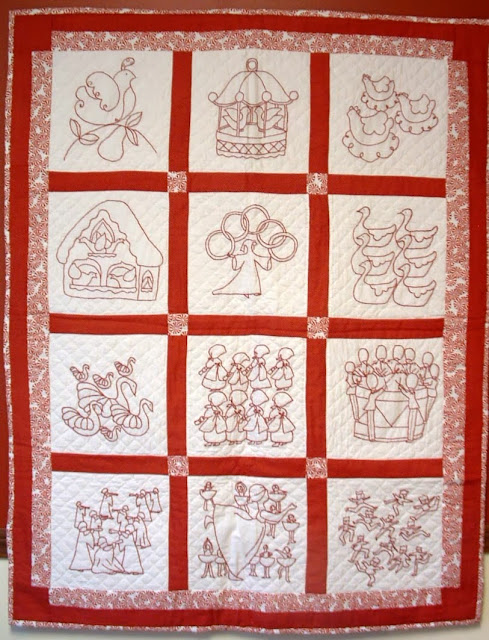"The guy never knows when he is licked." ~ Harry Hopkins on FDR
"Because he had beaten his illness, Roosevelt thought that he could beat anything." ~ John Gunther
James Tobin's new book
The Man He Became: How FDR Defied Polio to Win the Presidency covers Franklin D. Roosevelt's life between 1921 when he contracted infantile paralysis and 1932 when the Democratic party nominated him as their candidate for Governor of New York State. Tobin shows how polio brought out amazing strengths of character in FDR and ultimately prepared him to become a great leader.
At age 39 FDR was charming, handsome, rich, and determined to gain the presidency. He had served as Secretary of the Navy and on President Wilson's subcabinet.
Then he encountered the virus that left him crippled. Tobin's narrative accessibly explains the disease, how it is spread, how it attacks the human body, and how the medical doctors treated it. At a time when most children were naturally inoculated through exposure to the virus, FDR's privileged and sheltered life left him vulnerable. Overworked and tired, he arrived at the isolated family summer resort at Campabello and soon after became ill. By the time the doctors knew he had contracted polio, the damage was done.
FDR's mother assumed he would return to his childhood home and live out the rest of his life puttering with his stamp collection and watching the Hudson River flow by. But FDR was not a man to sit and watch life pass him by. He was determined to win the presidency, and he was going to walk to the podium to give his acceptance speech.
His recovery was not a straight or easy path. He did not follow doctor's orders and he avoided painful exercise. He hated the leg braces and crutches. FDR became his own physician, and took to exercising in warm water. So when he read about a polio victim who could walk after therapy at Warm Springs resort in Georgia FDR determined to experienced for himself the properties of the mineral springs. The resort was isolated and in bad repair. FDR was charmed. The warm mineral water enabled him to endure long hours of exercise without pain.
FDR needed a project. He liked to run things. He longed to own something of his own. He needed a source of income. FDR determined to buy the run-down resort, an economical and practical decision that seemed foolish. He imagined a place where polio victims could only heal their bodies but also find acceptance and normality in a world that shunted cripples out of sight.
FDR's ability to walk again was truly due to physiotherapists Helena Mahoney and Alicia Plastridge who taught him how to use his good muscles to compensate for the lost ones. Working with Mahoney at Warm Springs in 1927 FDR was finally able to walk with two canes.
Tobin challenges commonly held beliefs about Franklin's hiding his infirmity. Although FDR did strive to keep the more undignified aspects of his infirmity out of sight, such as being carried up stairs, once he returned to public life he did not, could not, hide that he was handicapped. Republicans had a field day attacking FDR as a cripple, a 'poor man' of pity who was not up to the job.
"The role he must play was a paradox. Normally the actor puts on a mask and becomes someone else. FDR's role now was to play the man he actually was--a strong man capable of leadership in the highest seats of power. The trick was to remove the mask that his audience would otherwise force him to wear. He must persuade the audience to discard its ancient, inherited belief about a man who was crippled. He must persuade them that a crippled man could be strong."
FDR went on the campaign trail, traveling by auto caravan across New York state. He had to change the way society viewed 'cripples'. Two weeks before the election he faced four thousand people and openly spoke about polio. "Seven years ago, through an attack of infantile paralysis, I was completely put out of any useful activity." People in audience were heard crying. "By personal good fortune, I was able to get the best kind of medical care. The result is that today I am on my feet." And in admitting he was a cripple, FDR also declared himself to be a fighter and a man of action.
I think it was a shining moment in American history when a man's ability made voters forget his handicap, that we judged him by the 'content of his character' and not by his physical abilities or disabilities.
James Tobin's first book,
Ernie Pyle's War, American's Eye-Witness to World War II won him the National Book Critic's Circle Award. He was able to leave his position with the Detroit News to write full time. He wrote a companion book to the PBS series
Great Projects: The Epic Story of the Building of America, From the Taming of the Mississippi to the Invention of the Internet. It was followed by
To Conquer the Air: The Wright Brothers and the Great Race for Flight.
To me, each book has at its core the story of men willing to go to great lengths to achieve the goals they hold dearest. Tobin's books are inspiring and dramatic narratives. To learn more visit
http://authors.simonandschuster.com/James-Tobin/1910453
Note: Tobin used the word cripple purposefully. He explains in his Prologue, "To understand Roosevelt's situation--in his time, not ours--one needs to enter a realm in which the stigma of physical disability was like the presence of oxygen in the air: utterly taken for granted, and therefore terribly powerful."
























































